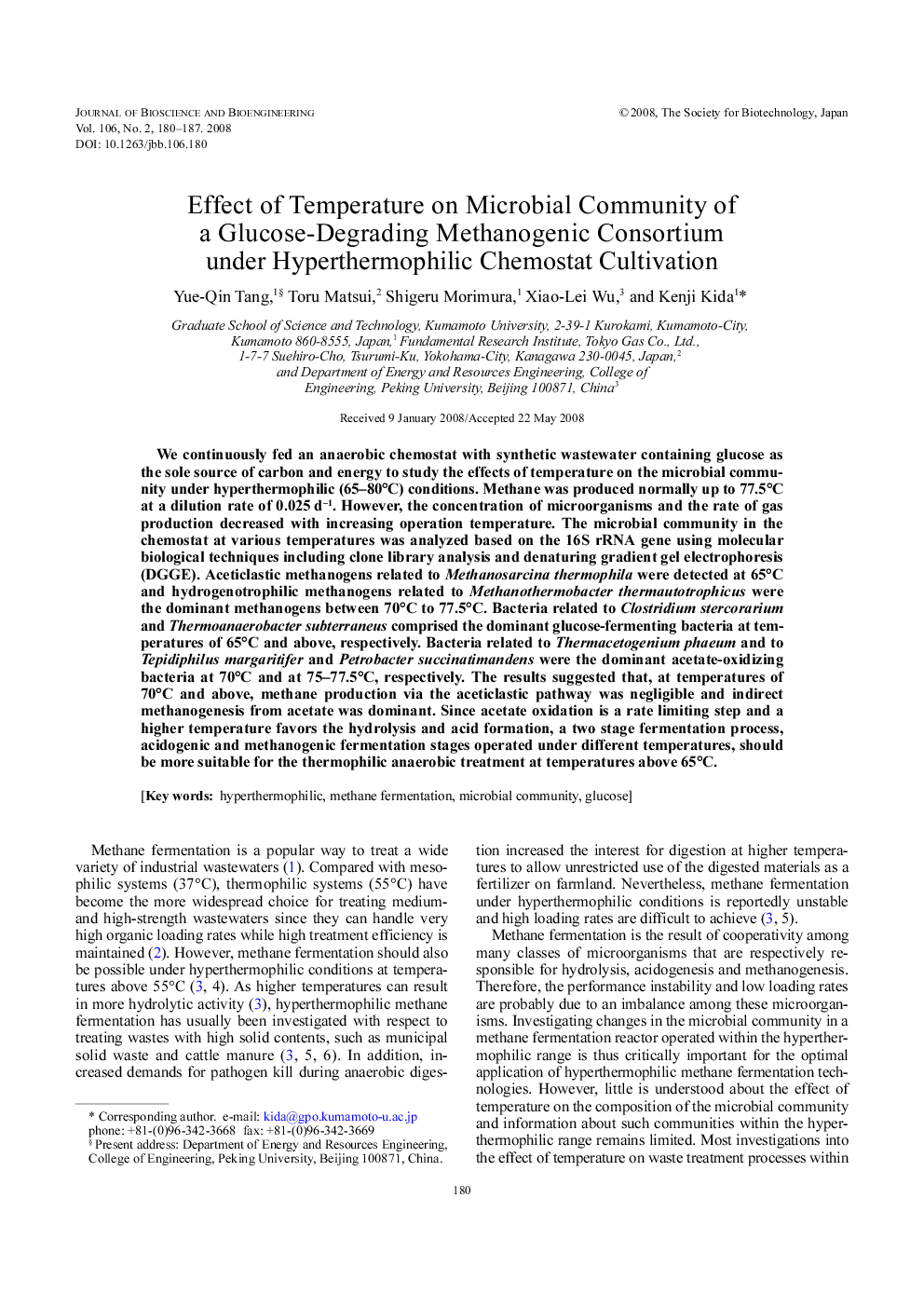| Article ID | Journal | Published Year | Pages | File Type |
|---|---|---|---|---|
| 21658 | Journal of Bioscience and Bioengineering | 2008 | 8 Pages |
We continuously fed an anaerobic chemostat with synthetic wastewater containing glucose as the sole source of carbon and energy to study the effects of temperature on the microbial community under hyperthermophilic (65–80°C) conditions. Methane was produced normally up to 77.5°C at a dilution rate of 0.025 d−1. However, the concentration of microorganisms and the rate of gas production decreased with increasing operation temperature. The microbial community in the chemostat at various temperatures was analyzed based on the 16S rRNA gene using molecular biological techniques including clone library analysis and denaturing gradient gel electrophoresis (DGGE). Aceticlastic methanogens related to Methanosarcina thermophila were detected at 65°C and hydrogenotrophilic methanogens related to Methanothermobacter thermautotrophicus were the dominant methanogens between 70°C to 77.5°C. Bacteria related to Clostridium stercorarium and Thermoanaerobacter subterraneus comprised the dominant glucose-fermenting bacteria at temperatures of 65°C and above, respectively. Bacteria related to Thermacetogenium phaeum and to Tepidiphilus margaritifer and Petrobacter succinatimandens were the dominant acetate-oxidizing bacteria at 70°C and at 75–77.5°C, respectively. The results suggested that, at temperatures of 70°C and above, methane production via the aceticlastic pathway was negligible and indirect methanogenesis from acetate was dominant. Since acetate oxidation is a rate limiting step and a higher temperature favors the hydrolysis and acid formation, a two stage fermentation process, acidogenic and methanogenic fermentation stages operated under different temperatures, should be more suitable for the thermophilic anaerobic treatment at temperatures above 65°C.
